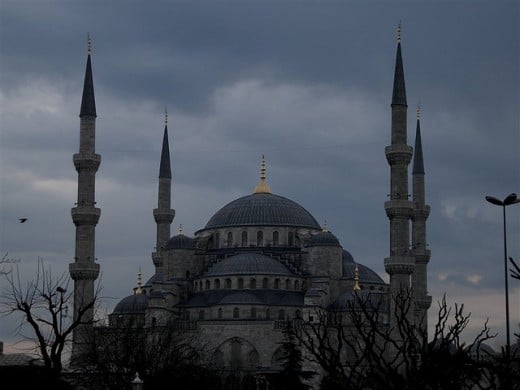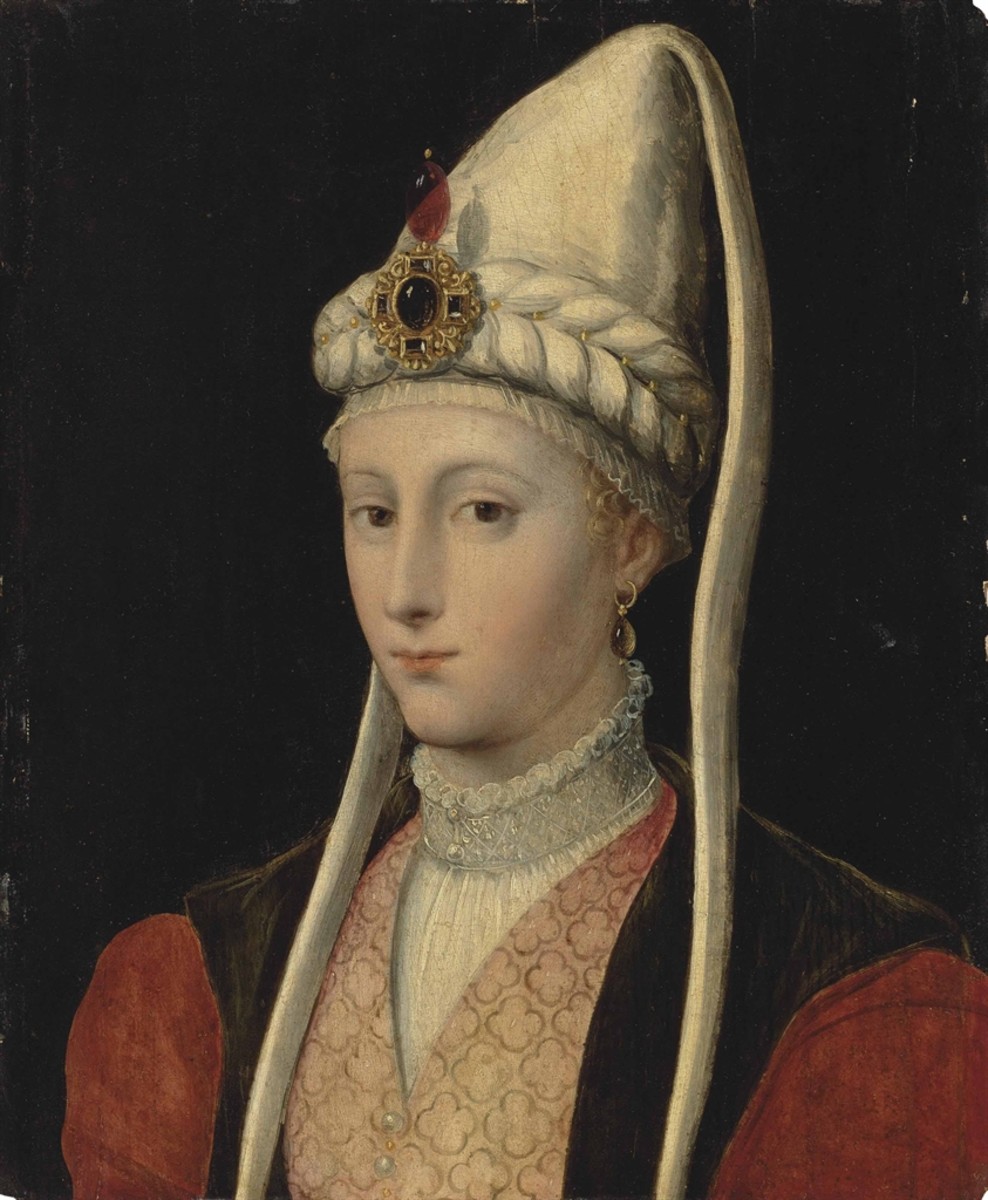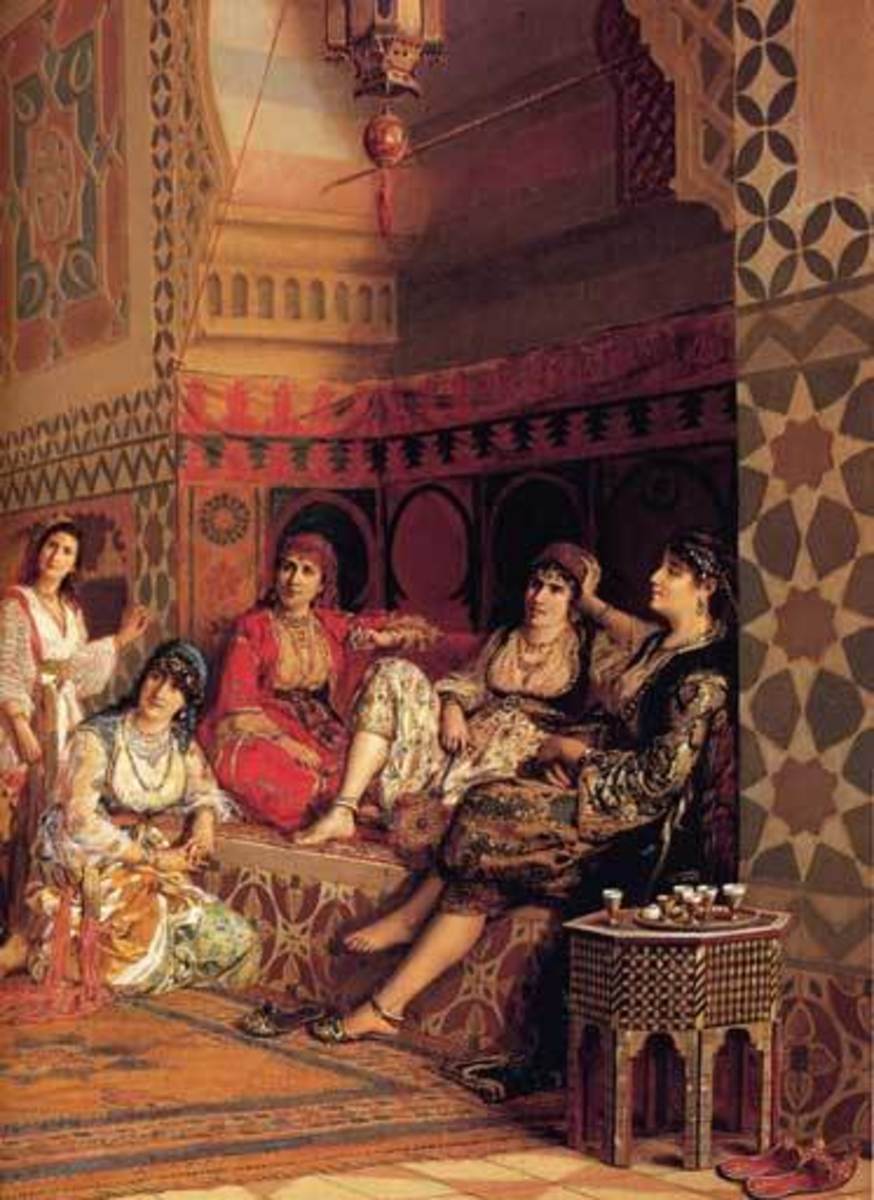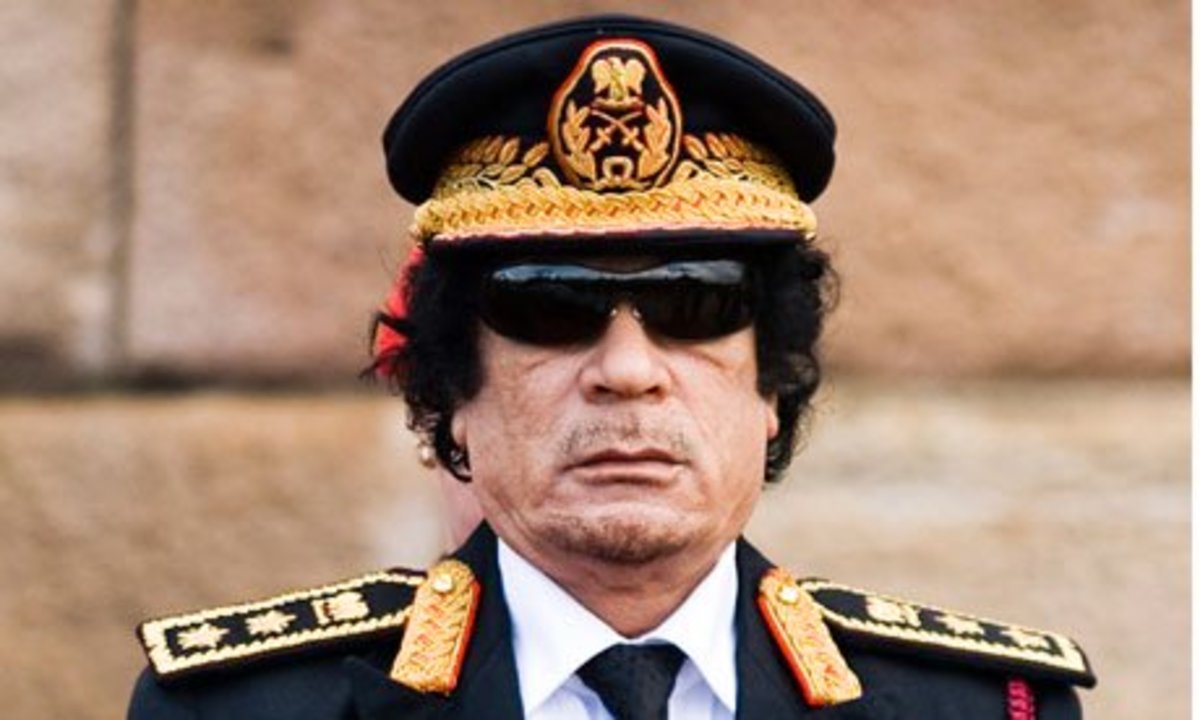The Rise of Islam's Political Empire in the Last Century
The 20th century witnessed the outcome of two world wars and not only the rise and fall of the Third Reich and the rise and fall of communism, but also the fall and rise of political Islam.
The Fall
The End of the "Ottoman Caliphate"
1517-1875
The last 400 years of the Islamic system of government, the Caliphate, was claimed by the Turkish Sultans of the Ottoman Empire. It was during this period that the Ottoman Sultan was viewed as the leader and representative of the Islamic world. He ruled from Constantinople (now Istanbul) over an empire that, at its peak, covered
- Anatolia,
- most of the Middle East,
- North Africa,
- the Caucasus, and
- extended deep into Eastern Europe.
Monument to both the Byzantine and Ottoman Empires

Largely due to poor leadership and archaic political norms, however, the Ottoman Empire gradually lost its former position as a leading superpower. The Empire was unable to keep pace with the changes in Europe, which were regrouping after
- the Peace of Westphalia, ending three internal wars that had gone on for many years,
- the Reformation, and
- the Industrial Revolution.
Therefore, as technological progress in Europe surged, the Ottoman Empire could not respond effectively. Territorial losses in conflicts, e.g. the Russo-Turkish Wars, substantially reduced Ottoman strength and influence, and years of financial mismanagement led to the default on its loans in 1875.
1876-1909
Sultan Abdul-Hamid II sought to turn things around through strong leadership during this period. He took into his own hands absolute power over the Empire's governance, taking a hard-line against Western involvement in Ottoman affairs. He did this by
- emphasizing the Empire's "Islamic" character,
- reasserting his status as the Caliph, and
- calling for Muslim unity behind the Caliphate.
This strengthened the Empire's somewhat; reduced the national debt, and initial revitalization of the infrastructure. However, his autocratic style of rule led to the end of his reign.
Turkish military officers formed the Young Turk Party and eventually seized control of Turkey after WWI. They forced Abdul-Hamid to give over the Caliphate authority and restore the parliament and constitution he had suspended thirty years earlier, creating a constitutional monarchy. This new movement privately disdained Islam and the religious establishment, while publicly they presented their ideas as a revival of true Islamic principles.
1909 - 1918
Nationalist uprisings that had plagued the Empire sporadically for the previous fifty years intensified. The masses were growing frustrated with chronic misgoverning and Turkey's poor showing in military conflicts.
- In 1911 the Ottoman Turks failed to defend Libya against Italy.
- In 1912 Bulgaria, Serbia, Montenegro, and Greece formed the Balkan League, an anti-Turkish alliance and launched a joint attack on the Ottoman Empire. These are the Balkan Wars that eliminated what little presence the Ottomans had left in Europe.
In 1913, the Young Turk Party seized absolute control of the government.
Blood and Oil - Istanbul Surrenders
World War I
As war broke out in Europe, the Young Turks struck an alliance with Germany. Britain, France, and Russia declared war on the Ottoman Empire. Though the Young Turks had compelled the Sultan, as the Caliph, to declare a global jihad to resist the Allied encroachment, they resigned and their leaders fled Turkey aboard a German warship.
The Sultan agreed to the Armistice of Mudros, formalizing Ottoman surrender aboard a British warship on October 30, 1918. Allied troops arrived in Istanbul and occupied the Sultan's palace shortly thereafter.
However in an attempt to keep his throne and preserve the Ottoman dynasty in some fashion, the Sultan dissolved parliament and allowed an Allied military administration to replace the government vacated by the Young Turks. The huge conglomeration of Ottoman territories was divided into several new nations.
1919-1924
A war of independence against the Allies, waged by Turkish nationalists and organized by Mustafa Kemal, establishes a government of resistance at Ankara. This eventually leads to international recognition of the sovereignty of the Republic of Turkey as the successor state to the Ottoman Empire.
The Khilafat movement (mainly Muslims in India) had launched a political campaign to influence the British government to protect the Caliphate for the sake of Islam, perceived by some as a return to the "fundamentals" of Islam. Although the Caliphate had belonged to the Ottoman Empire, by its dissolution, it was now seen to rest on the Turkish state.
In 1922, the last Ottoman Sultan left Turkey. The Turkish Republic was proclaimed on October 29, 1923, in the new capital of Ankara. Mustafa Kemal was elected as the first President and in 1924 the Turkish Constitution was adopted, abolishing the Caliphate institution on March 3rd. The first president then enacted reforms for equal rights for women, secular government, prohibition of the fez and the veil, substitution of the Latin alphabet for the Arabic, Turkification of city names, etc. After Kemal's death one-party rule continued.
The Rise
The Quest: To regain the Lost Caliphate or, More?
1928
In Egypt, Hasan al-Banna founds the Muslim Brotherhood (MB), an Islamist movement dedicated to social, political, and moral reform. The MB movement helped overthrow the pro-western monarchies in Egypt and other Muslim nations during the early 20th century, and later spread to other Arab nations and to Pakistan.
1933
The MB unites with Hitler’s Third Reich, adopts Hitler’s method of genocide to cleanse Arab world of non-Muslims. Abdul Gamal Nassar who was to become Egypt’s president political slogan “One Folk, One Party, One Leader” is a literal translation of the German Nazi slogan.
1932
The Wahhabist-oriented Al-Saud dynasty conquered and unified the various provinces on the Arabian peninsula, founding the modern day Kingdom of Saudi Arabia. Vast wealth from oil discovered in the following decades, coupled with Saudi control of the holy cities of Mecca and Medina, have since provided a base and funding for Wahhabi missionary activity.
Muslim Brotherhood's stated goal
To instill the Qur'an and Sunnah of Muhammad as the "sole reference point for ... ordering the life of the Muslim family, individual, community ... and state."
Islamic governments must be based on this system and eventually unified in a Caliphate, Islam’s manifest destiny, an empire, stretching from Spain to Indonesia.
1939-1945
Amin Al-Husseini spent WWII at Hitler’s side calling Nazi Muslim troops he established the “Cream of Islam”. His troops were very involved in the genocide of Jew, Gypsies and Serbs.
1941
The MB's South Asian counterpart Jamaat-e-Islami is founded by Sayyid Abul Ala Maududi.
1945
Husseini appointed leader of MB importing Nazi methodology to the Middle East. Fled to Egypt, wanted for war crimes in WWII.
1944
Saudi Arabia and Husseini as president co-found the Arab League of seven Islamic nations, with the unrelenting aim of war against Israel.
Wahhabi Islam To Islamic Jihad
1948
Yasser Arafat joins MB working directly under Husseini.
1949
Hasan al-Banna, leader of the MB, is assassinated by Egyptian security forces. Nazis join MB. Thousands of Nazi experts incorporated into the armies and governments of Egypt and Syria.
Political?
The MB is a movement, not a political party, but members have created political parties in several countries, such as the Islamic Action Front in Jordan and Hamas in Gaza and the West Bank. These parties are staffed by Brotherhood members but kept independent from the MB to some degree.
The MB’s position on violence has caused disputes within the movement.
1954
Algerian War of Independence begins. Hizb ut Tahrir is established to bring the Muslims back to living an Islamic way of life at all levels of society, under the shade of the Caliphate State following an exclusively political method.
Over the last part of the century many other Muslim nations also gain independence as sovereign states.
1979
The regime in Iran is overthrown by a popular revolution. In its place, Iranian clerics led by Ayatollah Ruhollah Khomeini establish an Islamic government.
Religious students in Saudi Arabia seize control of the Haram of Mecca, sparking a two-week standoff with Saudi security forces. The crisis comes to an end when Saudi forces storm the mosque, killing 237 of the 300 men and apprehending the remainder. All surviving conspirators in the plot are publicly executed.
1980s
Saudi Arabia begins financing the conversion of Americans to Wahhabi Islam, building mosques throughout the U.S. and the rest of the Western world.
1980s and 1990s
Wahhabi
A distinction has been drawn by some between the "deeply conservative" Wahhabis and the "followers of political Islam." They believe that "the decision to wage jihad lay with the ruler, not the individual believer."
For each country, the MB General Executive leadership has appointed a Branch committee with a Masul (leader to do fundraising, infiltrating in and overtaking other Muslim organizations. The aim is to unite the Muslims dedicating themselves to the general goals of the MB movement.
Revelation 13:1-3
1 And I saw a beast coming up out of the sea. ... 3 One of his heads appeared to be fatally wounded, but his fatal wound was healed.
This quote was sent to me from an unknown source.
Islam is the greatest killer of all time, worse than Christianity, fascism or communism. Jihad destroyed a Christian Middle East and a Christian North Africa. Soon it was the fate of the Persian Zoroastrian and the Hindu to be the victims of jihad. The history of political Islam is the destruction of Christianity in the Middle East, Egypt , Turkey and North Africa. Half of Christianity was lost.
Before Islam, North Africa was the southern part of Europe (part of the Roman Empire ). Around 60 million Christians were slaughtered during the jihadic conquest. Half of the glorious Hindu civilization was annihilated and 80 million Hindus killed. The first Western Buddhists were the Greeks descended from Alexander the Great's army in what is now Afghanistan. Jihad destroyed all of Buddhism along the silk route. About 10 million Buddhists died. The conquest of Buddhism is the practical result of pacifism. Zoroastrianism was eliminated from Persia . The Jews became permanent dhimmis throughout Islam.
In Africa over 120 million Christians and animists have died over the last 1400 years of jihad. Approximately 270 million nonbelievers died over the last 1400 years for the glory of political Islam. These are the Tears of Jihad which are not taught in any school.
- Tears of Jihad - Political Islam
An article discusses the numbers of people killed by jihad during the 1400 years of Islamic history totaling roughly 270 million
Trans-national war
Their influence is fast growing, especially in Europe, but not easy to trace as the active members have to keep their membership secret.
"Radical Islam has risen from years of slumber." These fanatics feel 'god' has sent them on a mission. They use our democracy and laws against us.
Al Qaeda says it's political
Al Qaeda sees the MB reform methods as political.
Once Al Qaeda was fully organized, they denounced the MB's reform through nonviolence and accused them of
betraying the cause of Islam and abandoning their 'jihad' in favour of forming political parties and supporting modern state institutions.

The Muslim Brotherhood in America
North America objectives
One citation from the document General Strategic Goal for the Group in North America makes the objectives clear that the MB
work in America is a kind of grand Jihad in eliminating and destroying the Western civilization from within and "sabotaging" its miserable house by their hands and the hands of the believers so that it is eliminated and God's religion is made victorious over all other religions.
Infiltration from our southern border
Iranian-backed militants may attempt to infiltrate the U.S. or use Latin America as a staging ground for anti-American attacks.
- Tehran is reaching out to Latin American countries in order to reduce its diplomatic isolation and increase ties to leftist countries.
- March 2009 the U.S. obtained information that Iran was attempting to transfer to Venezuela unmanned aerial vehicles in violation of U.N. resolutions.
- Other populist governments like Bolivia, Ecuador, and Nicaragua have also sought to create closer political and economic ties with Iran.
- Hundreds of illegal aliens from countries known to support and sponsor terrorism are reportedly sneaking across the U.S.-Mexico border, from Afghanistan, Egypt, Iran, Iraq, Pakistan, Sudan and Yemen. Other illegals were from Armenia, Bosnia, Ghana, Jordan, Kenya, Morocco, Sudan, Uzbekistan, Botswana and Turkey.
© 2010 Deidre Shelden






